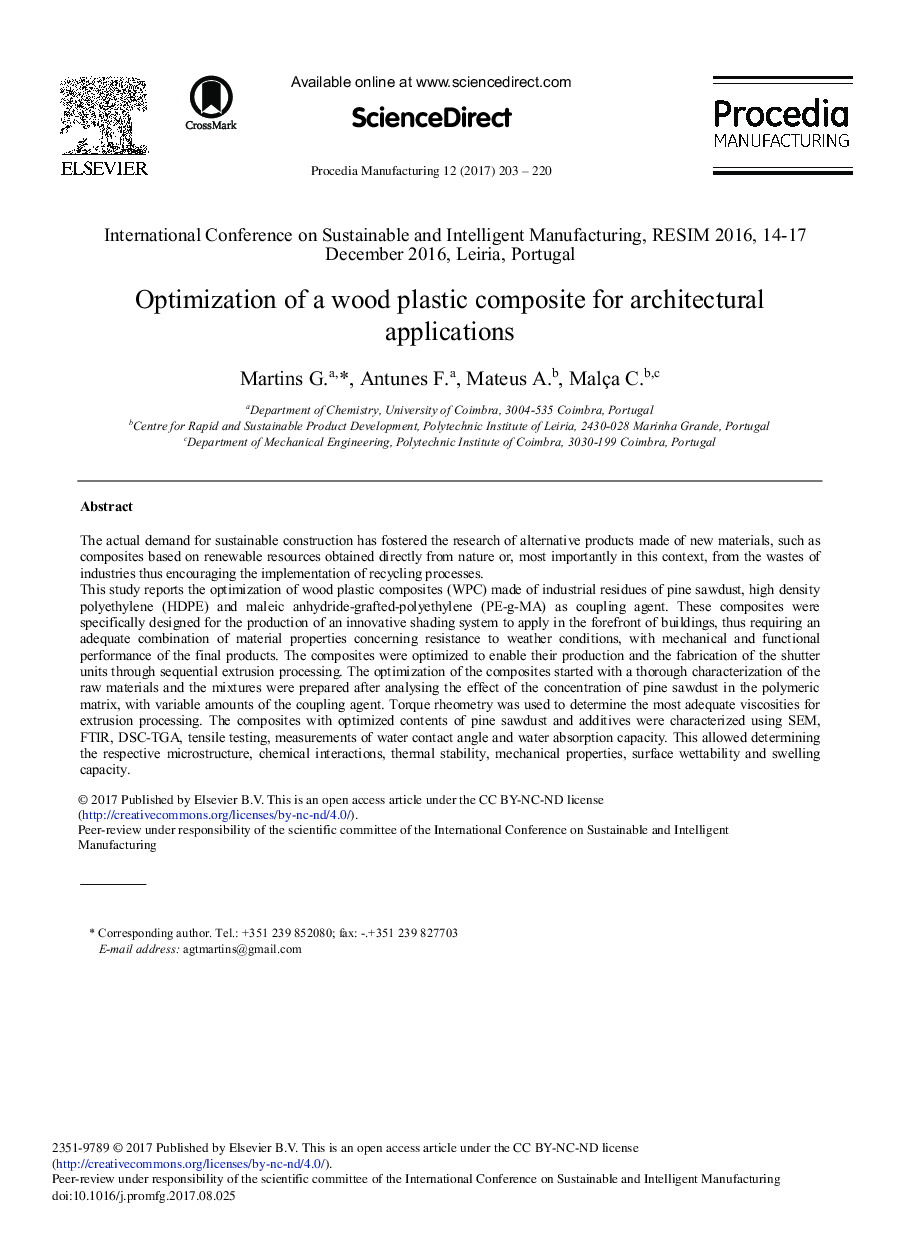| Article ID | Journal | Published Year | Pages | File Type |
|---|---|---|---|---|
| 5128628 | Procedia Manufacturing | 2017 | 18 Pages |
The actual demand for sustainable construction has fostered the research of alternative products made of new materials, such as composites based on renewable resources obtained directly from nature or, most importantly in this context, from the wastes of industries thus encouraging the implementation of recycling processes.This study reports the optimization of wood plastic composites (WPC) made of industrial residues of pine sawdust, high density polyethylene (HDPE) and maleic anhydride-grafted-polyethylene (PE-g-MA) as coupling agent. These composites were specifically designed for the production of an innovative shading system to apply in the forefront of buildings, thus requiring an adequate combination of material properties concerning resistance to weather conditions, with mechanical and functional performance of the final products. The composites were optimized to enable their production and the fabrication of the shutter units through sequential extrusion processing. The optimization of the composites started with a thorough characterization of the raw materials and the mixtures were prepared after analysing the effect of the concentration of pine sawdust in the polymeric matrix, with variable amounts of the coupling agent. Torque rheometry was used to determine the most adequate viscosities for extrusion processing. The composites with optimized contents of pine sawdust and additives were characterized using SEM, FTIR, DSC-TGA, tensile testing, measurements of water contact angle and water absorption capacity. This allowed determining the respective microstructure, chemical interactions, thermal stability, mechanical properties, surface wettability and swelling capacity.
